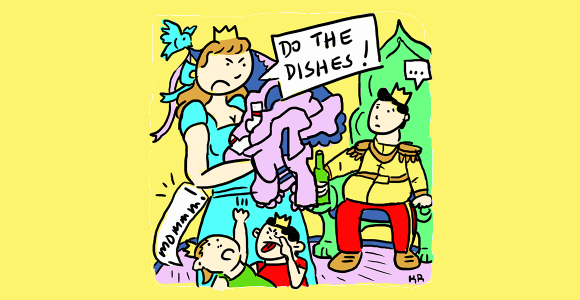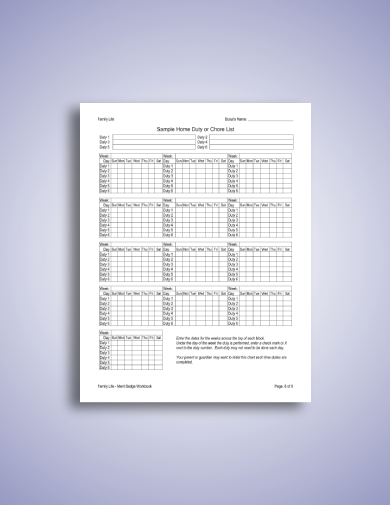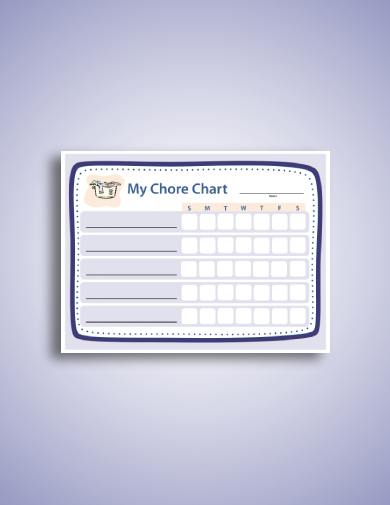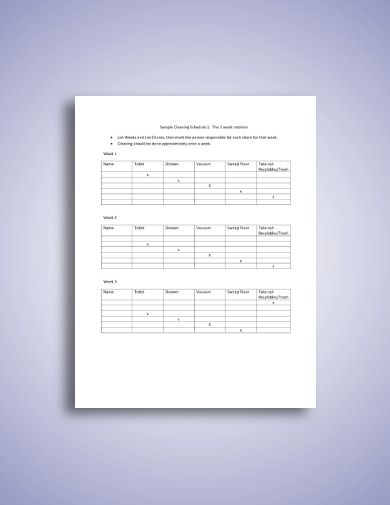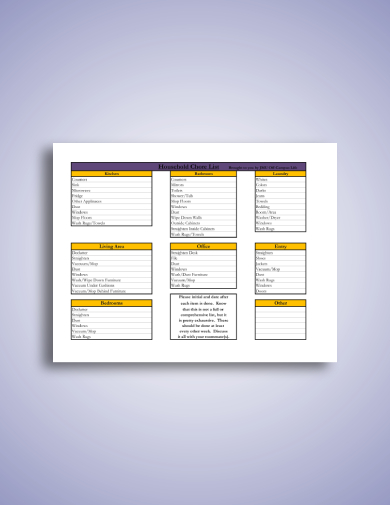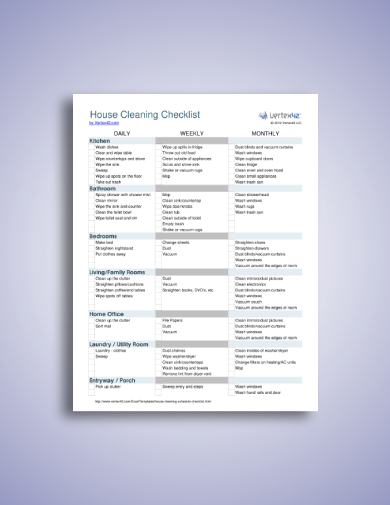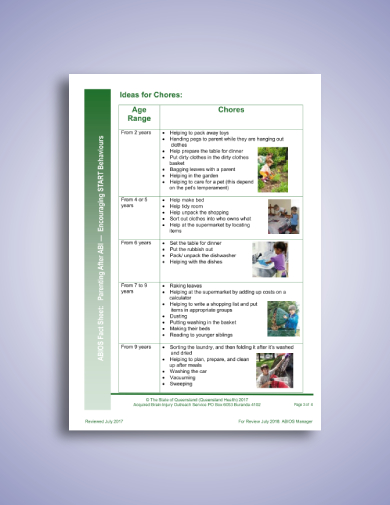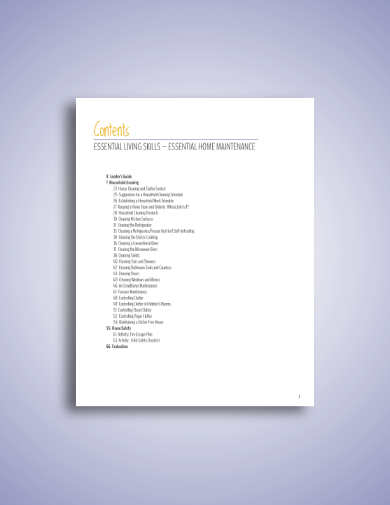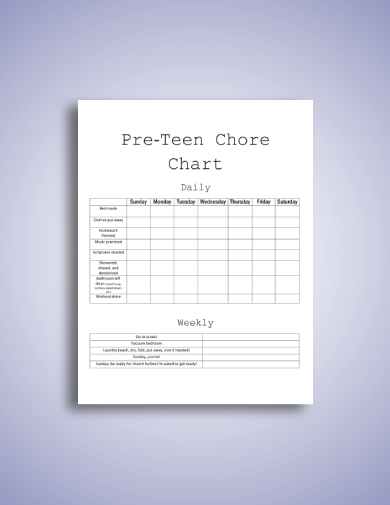9+ Family Chore Schedule Examples to Download
A lot of people would say they love a home that is clean and tidy, but not everyone enjoys having to do household chores. These include cleaning, ironing, washing, and a lot more specific tasks in the list that have to be done regularly at home. However, these chores will never be overwhelming if you only know how to break down the tasks into daily, weekly, and monthly lists. This can be done with the help of a family chore schedule. With a schedule template, you will know which tasks are to be prioritized and you get to assign the tasks to specific family members. You may refer to the examples below to get an idea on how to create and what to include in a family chore schedule.
Family Chore Schedule Examples
1. Family Workbook and Chore Schedule
In this family workbook and chore schedule, you can list down the duties needed to be done in a day. The days in a week are presented in columns, and the weeks are organized in a way that it presents the days as the column headings and the duties listed on the left side. A mark is entered under the day of the week the duty is performed next to the duty number signifying that the certain duty has been completed on that specific day.
2. Simple Family Chore Schedule
If you want to achieve a simple schedule for your family chores, this simple family chore schedule can surely help. The more you are specific with the tasks you need to do and the more you make it simple, the more it can easily and immediately be done. On the blank spaces provided on the left side, you can write the tasks needed to be done at home. On the right side, you can put a corresponding check mark if the task is performed on that certain day.
3. Weekly Family Chore Schedule
Because the members in a typical family are busy with their respective duties as a worker or student, cleaning the house are usually done approximately once a week when all the family members are off from their work or school. In order to properly distribute the responsibilities at home, you need to create a weekly family chore schedule, such as this example. The week number and the names of the person responsible are listed on the left, while their respective responsibilities are marked on the right under the chore headings.
4. Household Family Chore Schedule
If you have a relatively large house, there are a lot of areas where you need to do the cleaning. You have to list down those areas and the things on those areas that need to be cleaned, similar to the schedule presented in this example. The places to be cleaned are highlighted in orange which are as follows: kitchen, living area, bedroom, bathroom, office, laundry, entry, and others. If you create your own schedule, you must plot down all the specific items under those areas and discuss with the whole family regarding the assignment of the tasks as well as the day of the week when to perform those tasks.
5. Family House Cleaning Checklist and Chore Schedule
Making a comprehensive list of all the chores needed to be done at home can be pretty exhaustive, how much more doing those tasks. To help you with this, here is an example of family house cleaning checklist and chore schedule where the daily, weekly, and monthly tasks are listed and grouped according to the specific areas of the house, for example, kitchen bathroom, bedrooms, living room, home office, utility room, and entryway or porch. A checkbox is placed before each task so you can mark it if you have already completed that specific task.
6. Family Fact Sheet and Chore Schedule
Sometimes, parents would carry all the burden in doing the household chores by themselves. However, as a parent, you have to encourage your children to participate and complete jobs by giving them specific tasks at home. This would also help them learn about working in a team, which can be very much helpful when they grow up and grow old. You can start by listing the chores your child is capable of doing considering their developmental stage and explaining or showing them what you expect them to do. In this family fact sheet and chore schedule, listed are the chores that can be done at specific age groups so you will have a guide on what tasks you would give to your children.
7. Detailed Family Chore Schedule
Teach your kids to work in a team and to do the tasks with full dedication and fun by giving them a schedule of the tasks that they are capable of doing. In this example, the daily chores are listed as follows: do the dishes, wipe counters, dump kitchen garbage, hang up all the clothes, clean up any spots and spills, among others. The weekly chores may also include the following: vacuum dust, shop for grocery, run errands, do the laundry, and clean the yard. For the monthly chores, these may include washing the doormats, cleaning out the refrigerator, cleaning kitchen cabinets, and disinfecting trash containers.
8. Family Chore and Responsibility Schedule
This document lists the responsibilities at home that are suitable for kids at different ages, such as during early childhood (3–4 years old), childhood (5–10 years old), adolescence (11–12 years old), and teenagers. Also included are sure-fire tips to getting kids to help in the household chores. You must know what your children are capable of doing depending on their age range so you can assign them to the appropriate tasks that you need to do at home.
9. Family Chore and Home Maintenance Schedule
Presented in this example is a comprehensive list of all the household chores, suggestions for a household cleaning schedule, a table where you can plot the household work schedule, assignment of tasks, several cleaning tips for different household items, and child safety checklist. This would certainly help you when you create your own personalized family chore schedule.
10. Daily and Weekly Chore Schedule
A chore chart, being one of the tools that you can use when you create a chore schedule, is important and effective especially when you are assigning tasks to your children, similar to this example. You can categorize the chores into daily and weekly tasks so they will be guided on what to do on a daily and weekly basis. You may also add monthly tasks that they may need to do.


